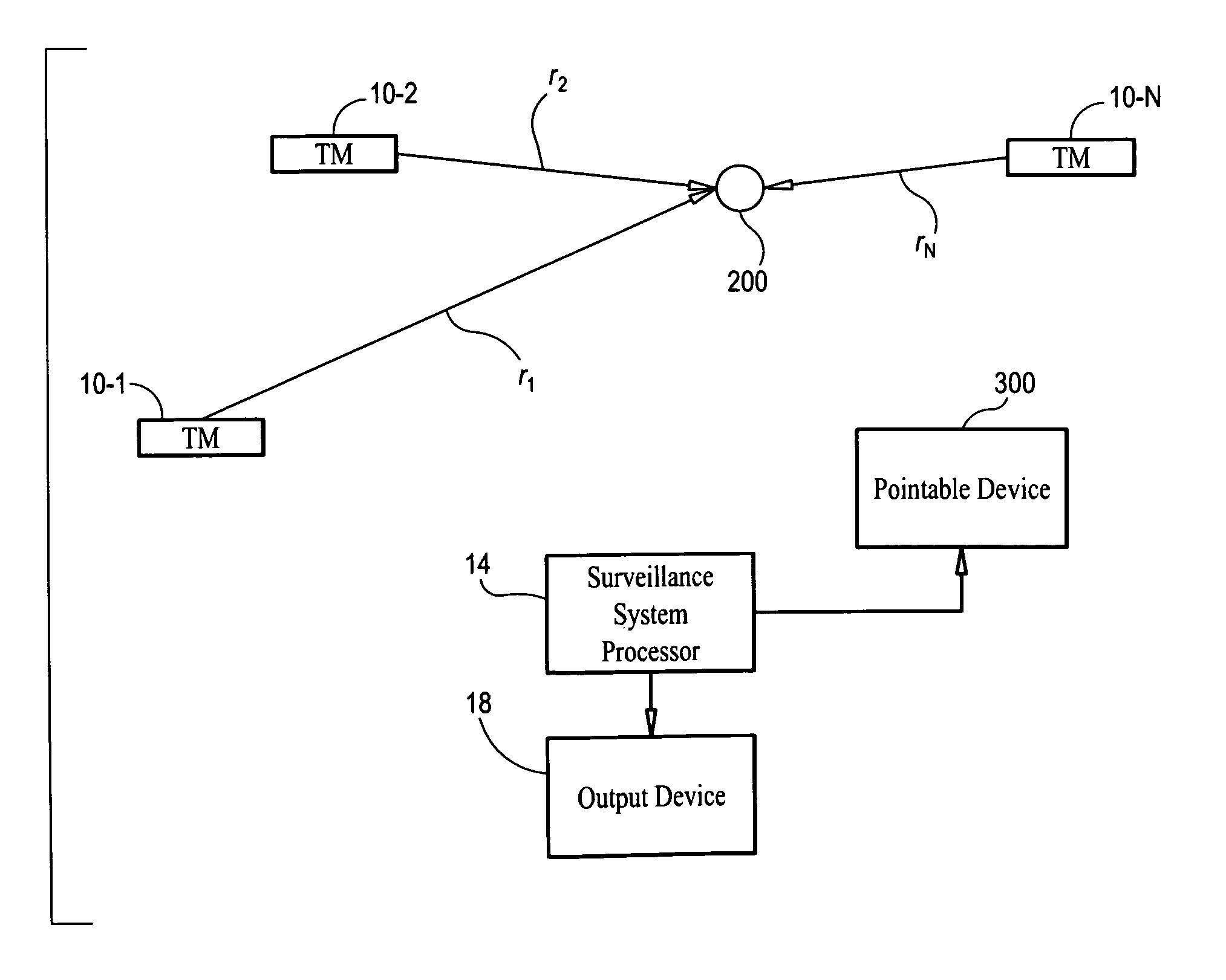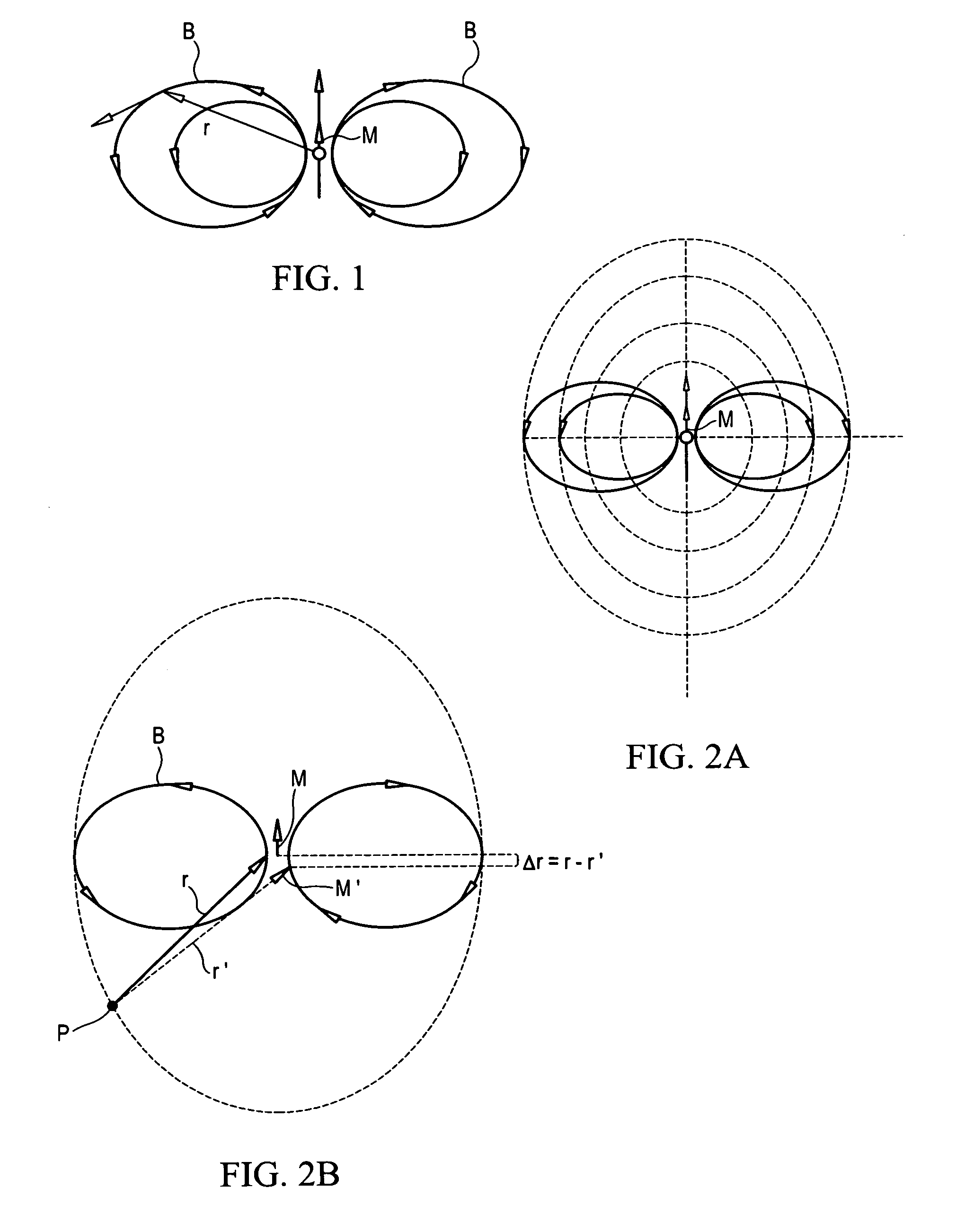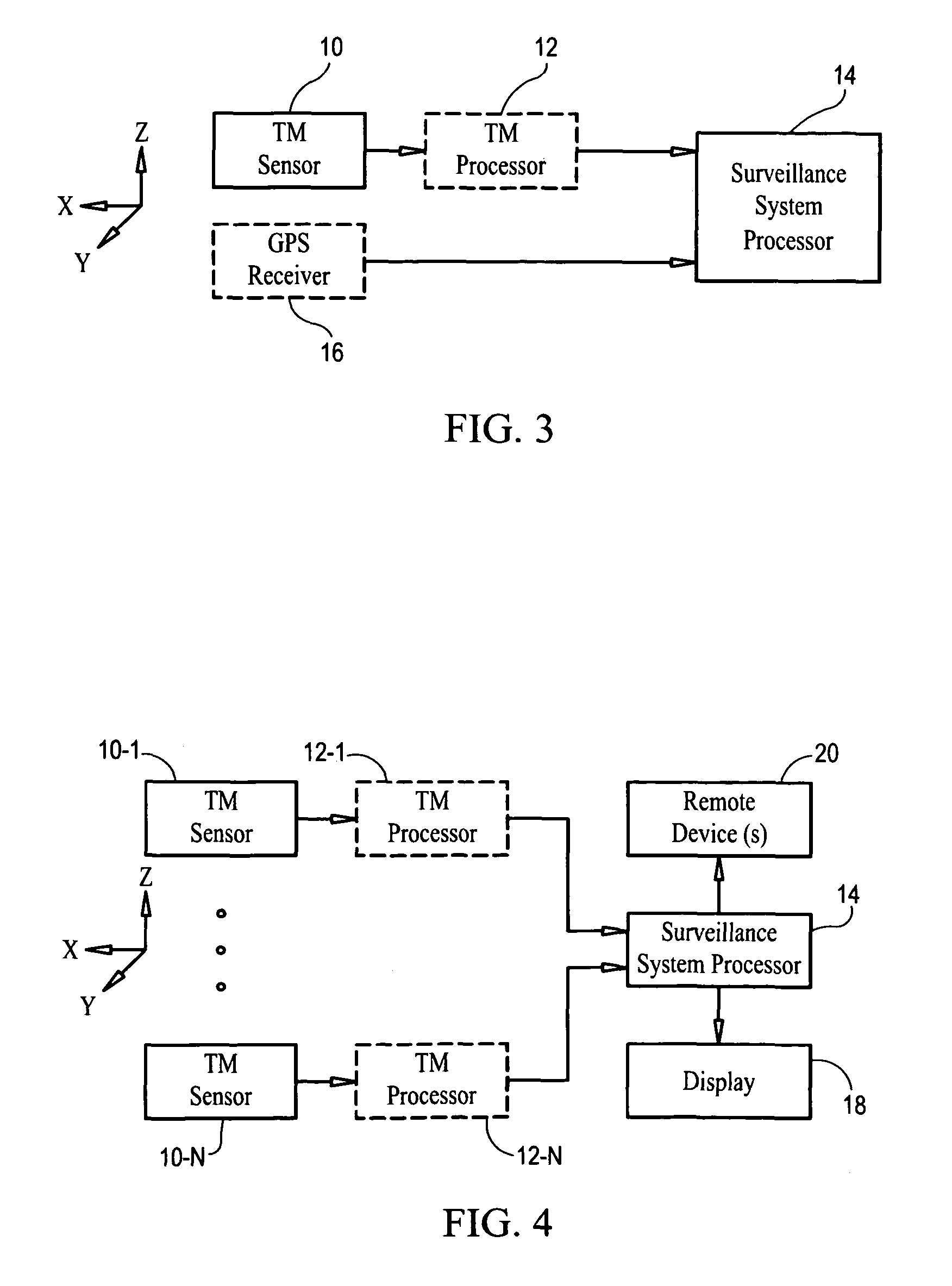Magnetic anomaly surveillance system using spherical trilateration
a technology of spherical trilateration and anomaly detection, applied in the field of magnetic anomaly detection system, can solve problems such as object location, multiple incorrect solutions, and complicated dlct process
- Summary
- Abstract
- Description
- Claims
- Application Information
AI Technical Summary
Benefits of technology
Problems solved by technology
Method used
Image
Examples
Embodiment Construction
[0028]Prior to describing the present invention's novel magnetic anomaly surveillance system using spherical trilateration, some technical background related to magnetic anomaly sensing will be provided below. In general, the design and operation of magnetic sensing systems for “detection, localization and classification” (DLC) of magnetically polarized objects use the following phenomena:[0029]1. The vector magnetic fields (B) that emanate from a magnetic object's magnetic moment (i.e., magnetic signature (M)) produce relatively small, short-range “magnetic anomalies” within the Earth's magnetic background field (BE). In principle, magnetic anomaly sensing systems can measure and process B-field data to detect the presence of a magnetic object, locate its position in space, and classify the object in terms of its magnetic dipole moment signature M.[0030]2. The relatively large, and locally nearly uniform (over short distances of hundreds of meters or less) magnetic induction field ...
PUM
 Login to View More
Login to View More Abstract
Description
Claims
Application Information
 Login to View More
Login to View More - R&D
- Intellectual Property
- Life Sciences
- Materials
- Tech Scout
- Unparalleled Data Quality
- Higher Quality Content
- 60% Fewer Hallucinations
Browse by: Latest US Patents, China's latest patents, Technical Efficacy Thesaurus, Application Domain, Technology Topic, Popular Technical Reports.
© 2025 PatSnap. All rights reserved.Legal|Privacy policy|Modern Slavery Act Transparency Statement|Sitemap|About US| Contact US: help@patsnap.com



